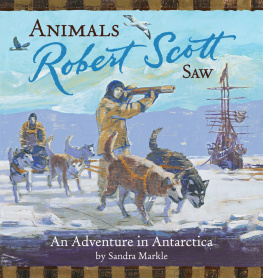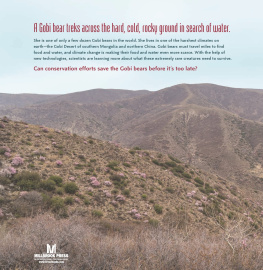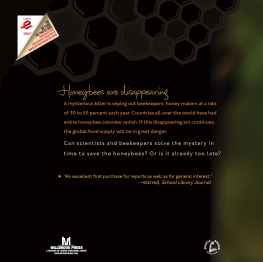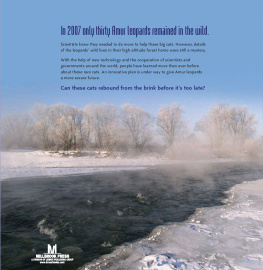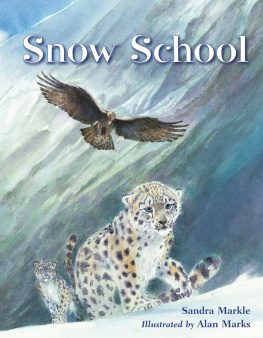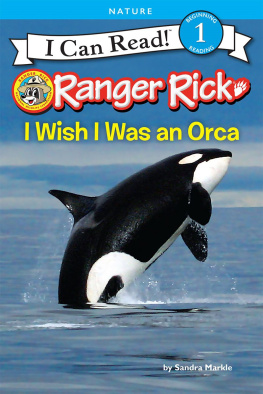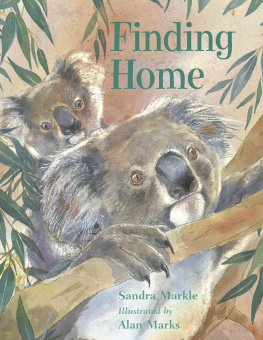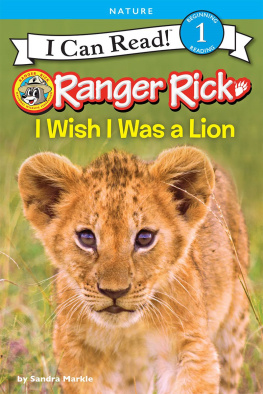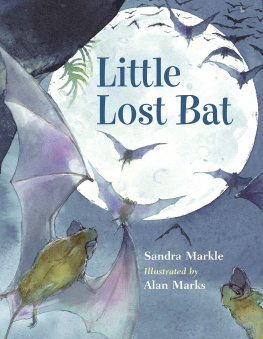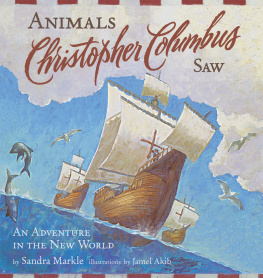For Dr. Jonathan Pascoe in honor of his medical contributions to the U.S. and New Zealand Antarctic ProgramsS.M.
Acknowledgments
The author would like to thank the following people for sharing their expertise: Dr. Beau Riffenburgh, editor of Polar Record at the Scott Polar Research Institute, Cambridge, England; and Baden Norris, emeritus curator of Canterbury Museum, Christchurch, New Zealand. A special thank-you to the U.S. National Science Foundation for sending the author twice on expeditions to Antarctica. As always, a special thank-you to Skip Jeffery for his help and support throughout the creative process.
Text 2008 by Sandra Markle.
Illustrations 2008 by Phil.
All rights reserved.
The illustrations in this book were rendered in acrylic on wood panel.
Image Credits:
: courtesy of the author.
Library of Congress Cataloging-in-Publication Data Markle, Sandra.
Animals Robert Scott saw : an adventure in Antarctica / by Sandra Markle.
p. cm.
ISBN: 978-1-4521-0975-6
1. Scott, Robert Falcon, 18681912Juvenile literature.
2. ExplorersGreat BritainBiographyJuvenile literature. 3. AntarcticaDiscovery and explorationJuvenile literature. 4. AnimalsAntarcticaJuvenile literature. I. Title.
G875.S35M27 2008
919.8904dc22
[B]
2006020920
Chronicle Books LLC
680 Second Street
San Francisco, California 94107
www.chroniclekids.com
Note to Parents and Teachers
The books in the Explorers series take young readers back in time to share explorations that had a major impact on peoples view of the world. Kids will investigate why and how the explorers made their journeys and learn about animals they discovered along the way. Theyll find out how some animals affected the outcome of the journey, helping explorers find their way, causing key events to happen, or helping the explorers survive. Young readers will also learn that, because of the explorers journeys, animals were introduced to places theyd never lived before, sometimes with dramatic results.
The Explorers Series helps students develop the following key concepts:
From the National Council for the Social Studies:
Human beings seek to understand their historical roots and to locate themselves in time. Such understanding involves knowing what things were like in the past and how things change and develop. Students also learn to draw on their knowledge of history to make informed choices and decisions in the present.
From the National Academy of Sciences:
Making sense of the way organisms live in their environments will develop an understanding of the diversity of life and how all living organisms depend on the living and nonliving environment for survival.
Imagine a place that is so far away from where most people live that for ages no one knew it existed. It can be reached only during the summer because in the winter its surrounded by ice and its dark nearly all the time. Much of the land is also covered in ice year-round, and the weather is among the fiercest in the world. This place is Antarctica (ant-ark-ti-kuh).
Since its such a long journey to get to Antarctica and conditions there are so unpleasant, why did Robert Falcon Scott go there twice? You may be surprised to learn that animals had a lot to do with why he went and also played a major role in what happened while Scott was there.

The Coldest Place on Earth
Once they arrived in Antarctica from Dundee, Scotland, Robert Scotts crew had to endure the coldest, driest, windiest continent on Earth. All but 2 percent of the land is covered in ice, and tiny insects and worms are the only creatures able to survive on land year-round.
Other Antarctic Facts:
- The coldest temperature ever recorded on Earth was -128.6F (-89.2C) in the interior of Antarctica.
- Antarctica has 70 percent of Earths freshwater frozen as ice, and more than 90 percent of Earths ice.
- If Antarcticas ice sheets melted, all of Earths oceans would rise by 200210 feet (60 to 65 meters).

The 1890s through 1914 (when World War I began) were years when countries competed to be the first to explore the earths frontiers. Two unexplored frontiers of special interest were the North Pole, in the Arctic (ARK-tik), and the South Pole, in the Antarctic. People lived in countries around the Arctic Circle, so explorers had some idea about the conditions of the North Pole. But reaching the South Pole meant crossing frozen land that no one knew anything about. Only whale and seal hunters had been anywhere near Antarctica, but they had not ventured inland. South Pole explorers were heading into the unknown.
Why Hunt Whales and Seals?
 | In the 1800s, whale oil for lamps was in great demand. Lightweight, bendable whalebone was used to make womens clothing, such as hoop skirts, which were fashionable at the time. Seals were hunted for their fur. Years of hunting had greatly decreased the numbers of whales and seals in much of the world, so hunters had to search for them in more remote placeseven as far away as Antarctica. |
Born in 1868, Robert Falcon Scott grew up in a time when explorers were heroes and people were just beginning to explore Antarctica. In 1821, John Davis, a seal hunter from New Haven, Connecticut, made the first recorded landing in Antarctica, but it was not widely publicized. In 1895, while hunting for whales with Leonard Kristensen, Carsten Borchgrevink (KAR-stun bork-GRAY-vingk) claimed to be the first person to set foot on the Antarctic continent. In 1899, Borchgrevink returned with an expedition headed by Henryk Bull and funded by a British newspaper owner. For the first time, a team went to Antarctica just for the sake of exploration.
Robert Scott during his service as a naval commander
When Scott was 18 and a midshipman in the Royal Navy, he met Sir Clements Markham (MAR-kum), a noted geographer and president of the British Royal Geographical Society. Sir Clements was impressed with Scotts intelligence and enthusiasmso much so that he followed Scotts progress in the navy with interest.
Several years later, Sir Clements arranged an expedition to Antarctica. He had a ship for the journeythe Discoverybut he needed a leader for the expedition. He chose the now 32-year-old naval commander Robert Falcon Scott.
Capturing Wildlife
Dr. Edward A. Wilson was hired as the assistant surgeon for the Discovery expedition. But he was also a skilled painter and loved studying birds. He would be most remembered for dying with Scott. However, he is also remembered for his studies and paintings of Antarcticas wildlife, especially penguins.
Traveling with Dogs
The breeds chosen most often for pulling sledges were the Greenland Dog and the Samoyed. Their thick double-fur coats, with a coarse, water-repellent outer layer and woolly undercoat, made them well suited to work in Antarctica, where summer temperatures are usually close to freezing and winter temperatures average between 14 degrees and -22 degrees Fahrenheit (-10 and -30 degrees Celsius).

